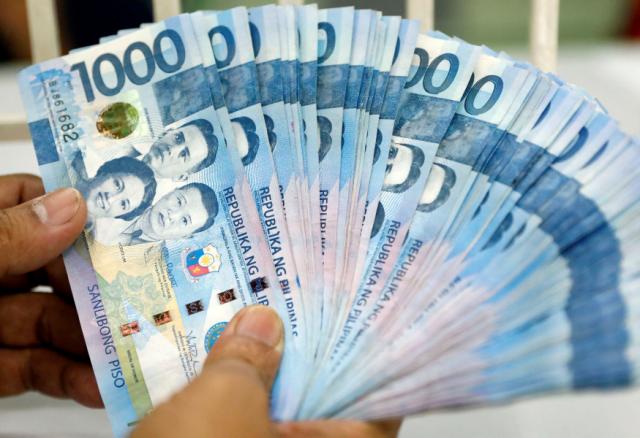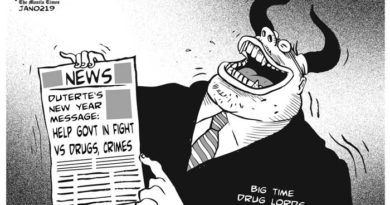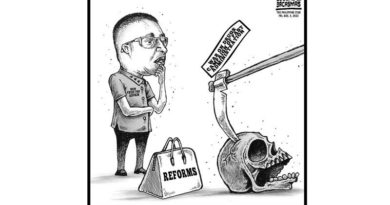Finance: MANILA- Philippine Peso’s Haven Status Appears to be Quickly Evaporating
.
.
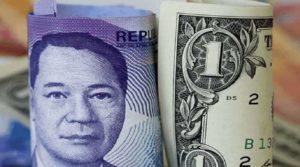
The Philippine peso is starting to lose its immunity from the coronavirus fallout.
The currency was the best-performing Southeast Asian currency last month on the perception the economy wasn’t as exposed to supply chain and trade pressures as some of its peers. The growth rate remained one of the highest in the region on the back of robust government spending and the recent oil price collapse was a boon given the country’s net importer status.
But now headwinds are rising as investors fear the economy may not be as insulated as first thought. Manila entered a month-long lockdown on Sunday as Philippine President Rodrigo Duterte considers a plan to impose a curfew on the area to try to contain the coronavirus outbreak. The total number of confirmed cases in the country has risen to 140 and 11 people have died after contracting the virus.
.
@ [email protected]

– SPACE RESERVE FOR YOUR ADVERTISEMENT
.
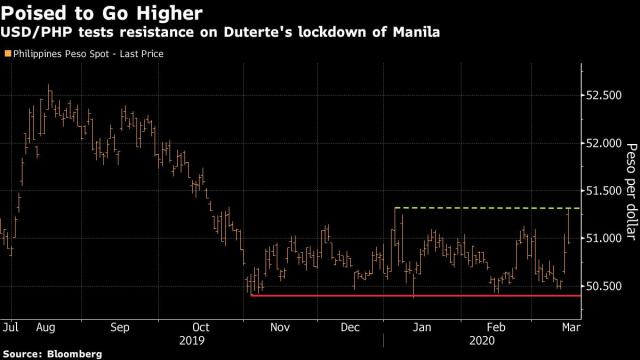
.
@ [email protected]

– SPACE RESERVE FOR YOUR ADVERTISEMENT
.
The latest import data from China, the country’s biggest trading partner, slumped almost 35% in February from a year earlier, signaling a disruption in the supply chain that could push prices up. And earlier this month, the Economic Planning Secretary warned that the nation’s manufacturing may be hurt by the coronavirus outbreak.
On Tuesday Fitch Solutions cut this year’s economic growth forecast to 6% from 6.3% as it sees the virus impacting tourism, delaying infrastructure projects and curbing overseas remittances.
“The sentiment is changing as fear slowly creeps in on the peso,” said Jonathan Ravelas, chief market strategist at BDO Unibank in Manila.
.
@ [email protected]

– SPACE RESERVE FOR YOUR ADVERTISEMENT
.
Over to the BSP
Investor attention now turns to the Bangko Sentral ng Pilipinas’s rate decision on March 19 to see what it will do to help support the economy.
While the central bank has left the possibilty of more than 50bps of rate cuts this year on the table, it may still opt to stand pat on rates given Governor Benjamin Diokno has indicated fiscal stimulus may be more effective in combating the negative impact of the virus.
The peso is liable to come under increasing pressure if investors are not impressed by the central bank’s measures.
“There’s room for the peso to weaken further, with the currency probably falling to 51.50-52 per dollar this year,” Ravelas said. “This might be a good time for importers to accumulate dollars.”
Meanwhile, the Federal Reserve’s surprise rate cut over the weekend, which should normally help support the peso, may only have a limited effect if risk-off sentiment continues. Futures on the S&P 500 Index traded limit down in Asia Monday.
The peso traded around the 51 level Friday.
Below are the region’s key economic data and events due this week:
- Monday, March 16: Japan core machine orders; New Zealand performance services index; China retail sales, industrial production and fixed assets ex-rural; Indonesia trade balance; Philippine overseas remittances; India wholesale prices
- Tuesday, March 17: RBA minutes and Australia 4Q house price index; New Zealand 1Q consumer confidence; Japan industrial production; Singapore NODX
- Wednesday, March 18: New Zealand 4Q BoP current account balance; Japan trade balance;
- Thursday, March 19: Australian employment; New Zealand 4Q GDP; Japan CPI and BOJ policy decision; Bank Indonesia rate decision; BSP rate decision and Philippine BoP overall
- Friday, March 20: New Zealand credit card spending; China 1-year and 5-year loan prime rate; South Korea PPI
.
@ [email protected]

– SPACE RESERVE FOR YOUR ADVERTISEMENT
.
Philippine Markets Cut Trading Hours as Manila Grinds to a Halt
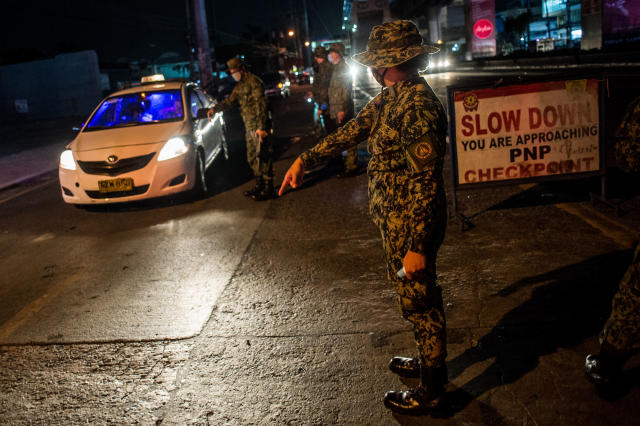
.
For comments-Email to : Pahulu Gan|
. [email protected]

